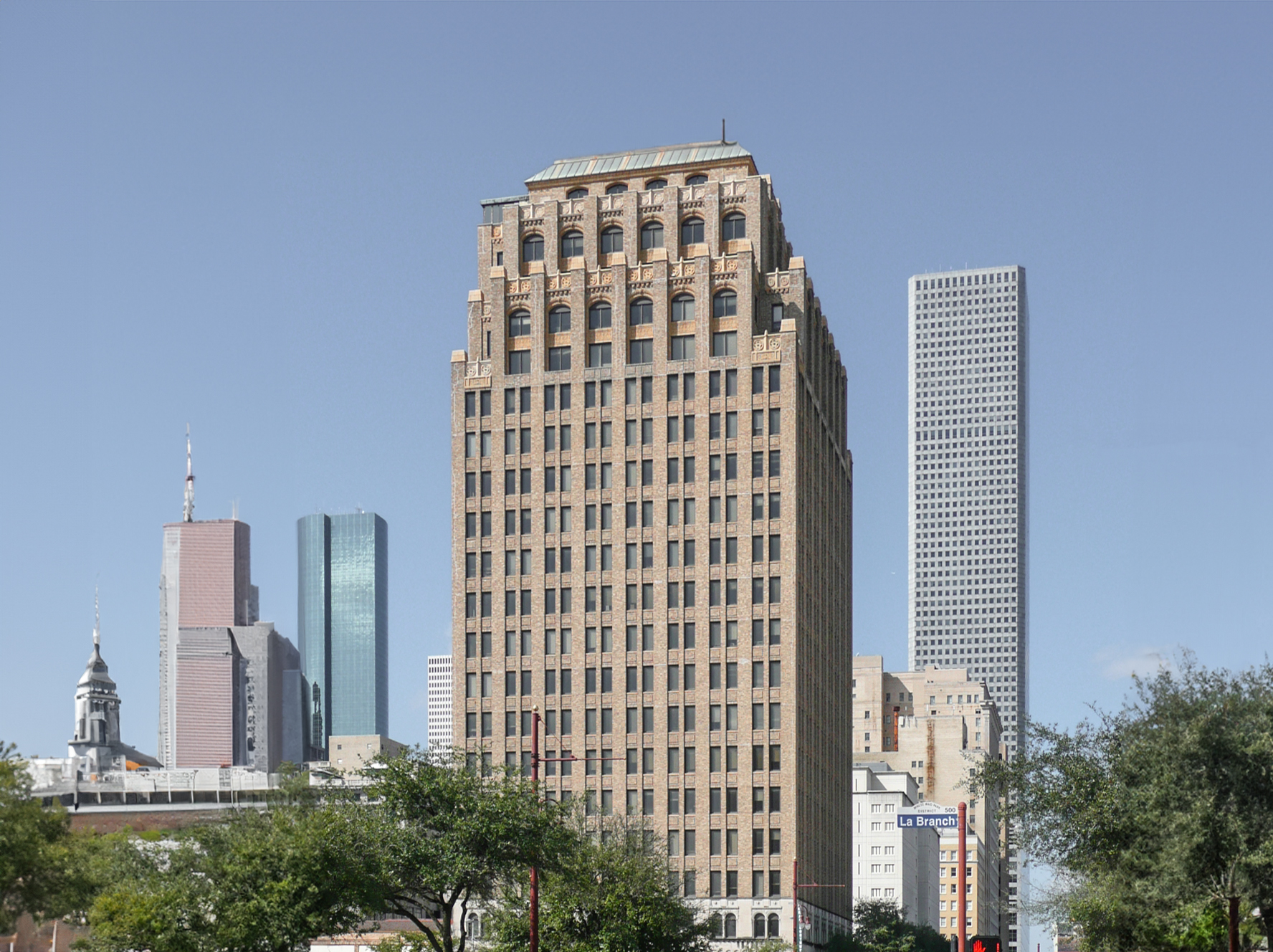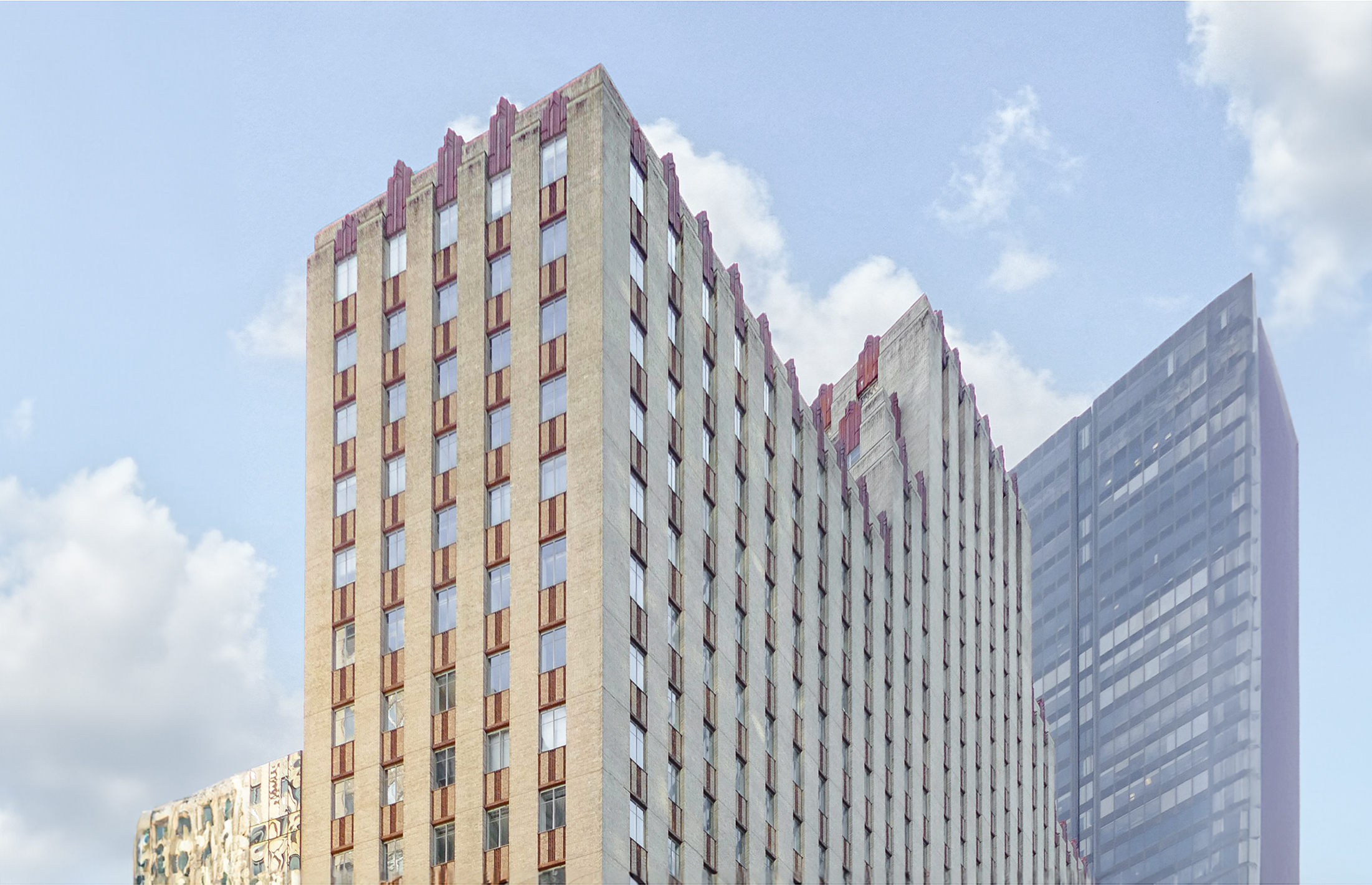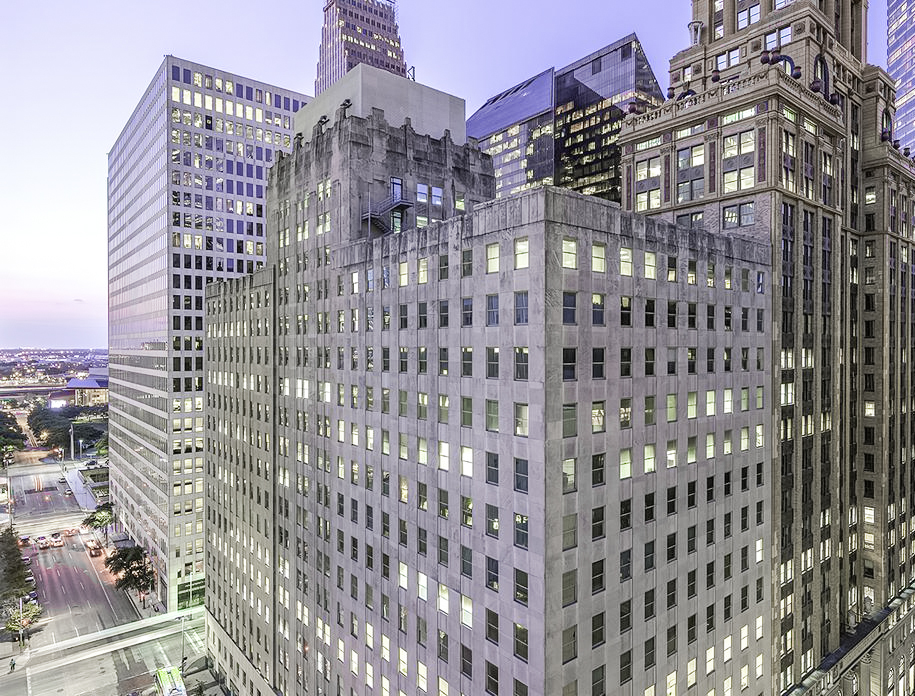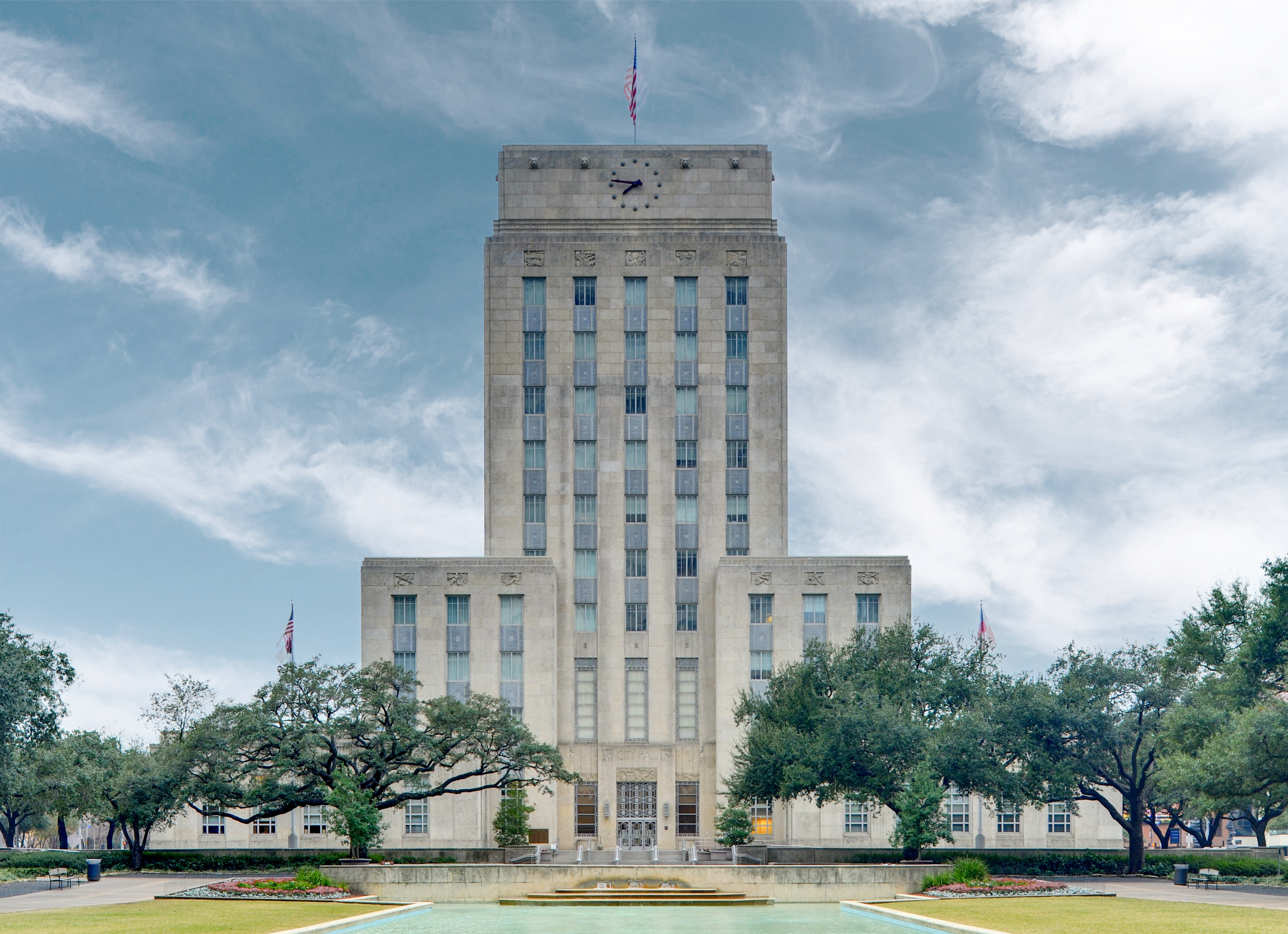The Great Southwest Building is an Art-deco skyscraper designed by Alfred Bossm, and built between 1926 and 1927 in Houston, TX.
Great Southwest Building is not the only name you might know this building by though. It is common for companies to want to attach their names to iconic buildings when they move in, or for the general public to come up with nicknames, and this one is no exception. The building has changed names several times over the years, and is also known as:
- Petroleum Building between 1927 and 1980.
- Great Southwest Building between 1980 and 2016.
- Cambria Hotel Downtown Convention Center from 2016 until this day.
Its precise street address is 1314 Texas Avenue, Houston, TX. You can also find it on the map here.
The Great Southwest Building is a structure of significant importance both for the city of Houston and the United States as a nation. The building embodies the distinctive characteristic features of the time in which it was built and the Art Deco style. Because of that, the Great Southwest Building was officially declared as a national landmark on September 21st 2017.
The building has been restored 2 times over the years to ensure its conservation and adaptation to the pass of time. The main restoration works happened in 1972 and 2019.





